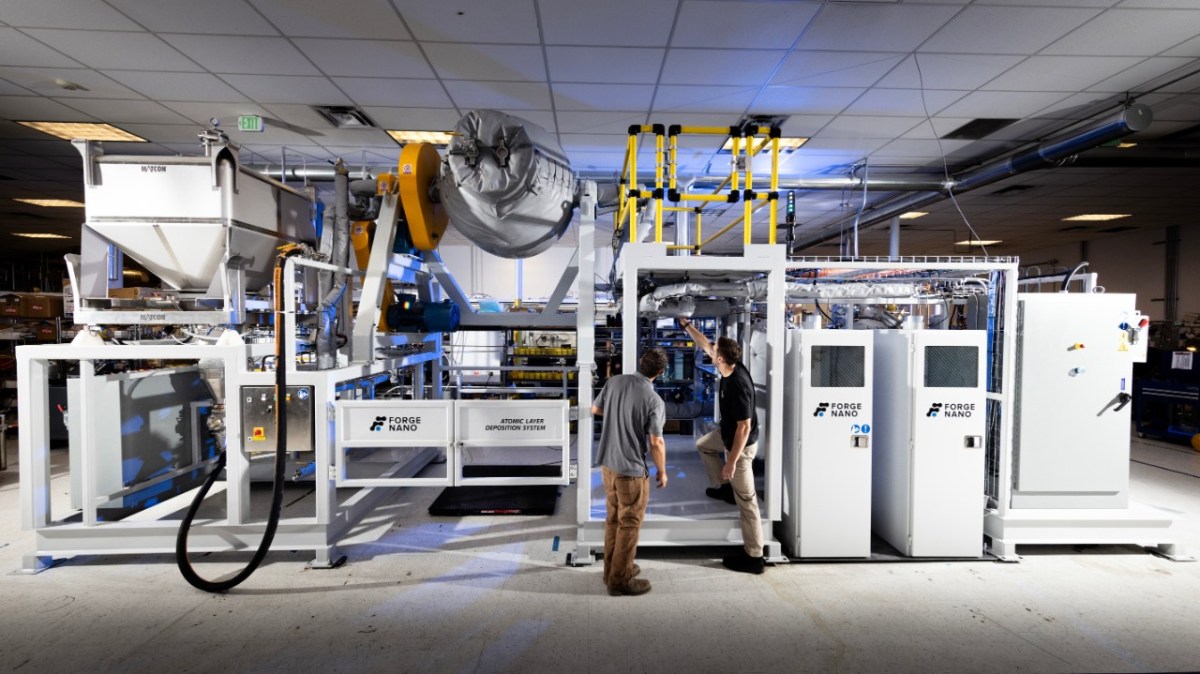General Motors is working with Forge Nano, a materials science startup, to find new ways to enhance the performance and lifetime of electric vehicle battery cells. The automaker’s investment arm, GM Ventures, on Wednesday injected $10 million into Forge Nano, which is developing a thin coating the startup says will help improve safety and increase […]
© 2024 TechCrunch. All rights reserved. For personal use only.
General Motors is working with Forge Nano, a materials science startup, to find new ways to enhance the performance and lifetime of electric vehicle battery cells.
The automaker’s investment arm, GM Ventures, on Wednesday injected $10 million into Forge Nano, which is developing a thin coating the startup says will help improve safety and increase the lifetime of cathode-active materials, reducing overall battery costs.
As part of the strategic investment, GM and Forge Nano also signed an agreement that will potentially see the automaker using the startup’s coating, an “atomic layer deposition technology” called Atomic Armor.
In a lithium-ion battery, the cathode is the side that stores the lithium ions when the battery is charged and releases them when discharged. The other electrode in a battery cell, the anode, takes in the lithium ions when the battery is charging and releases them during use. The most common combination of cathode materials is lithium, nickel, manganese, and cobalt, but lithium iron phosphate (LFP) batteries are gaining ground with GM and other automakers like Tesla and Ford.
The partnership and investment comes as GM drops its Ultium battery branding and moves away from a “single cell, single chemistry, single form factor strategy to more of a multi-cell, multi-supplier, multi-chemistry, multi-form factor strategy for our battery roadmap,” Jack Crawley, a GM spokesperson, told TechCrunch.
GM’s EV sales grew 60% year-over-year in the third quarter, but that growth isn’t reaching the pace the company and investors had hoped for. EVs still make up only 4.9% of GM’s total third-quarter sales, and CEO Mary Barra decreased 2024 guidance to 200,000 EVs sold.
GM Ventures always invests in startups with an eye towards potential strategic partnerships to improve its own products. In the electrification and battery space, GM Ventures has invested $167 million in 18 portfolio companies, including startups like Soelect, Mitra Chem, and SolidEnergy Systems.
“GM is always looking for ways we can make EVs more effective [and] pursue better battery performance,” Crawley said. “So atomic layer deposition – the ability to control our chemistry and structure of our battery materials at the atom-by-atom level – is certainly something we’re interested in.”
Crawley noted that this technology could lead to faster charging rates, increased energy density, and longer lived batteries.
Paul Lichty, Forge Nano’s CEO, added that the Atomic Armor platform increases the safety of cells by helping to prevent things like thermal runway events, which can lead to battery fires.
That’s because Atomic Armor is made of an ultra-thin ceramic layer to coat materials down to the atomic particle level, leading to more stable and robust performance, according to Lichty.
Battery cell materials today are typically manufactured with coatings, but Lichty says those aren’t uniform and they’re not at the atomic level.
“We see the downsides there when it comes to batteries that don’t have enough energy for things like eVTOLs or electric aircraft or long-range vehicles,” Lichty said. He also noted that most of Forge Nano’s commercial customers today are in the aerospace and defense industries, but this investment from GM is a step towards broader adoption in the EV industry.
“We’re basically preventing corrosion in the cell that makes them die quickly, whether that’s from heat or from usage,” James Trevey, Forge Nano’s chief technology officer, told TechCrunch. “The more extreme the application, the more improvement you’ll see from Atomic Armor.”
Lichty said in trials and commercial deployments, Forge Nano has been able to “extract more lithium out of that cathode when we cycle than anybody else” using “lithium that’s already in there,” thus increasing the energy density of a battery cell by up to 20%.
“It’s kind of tantamount to finding 20% more lithium just lying around on the ground and being able to access that essentially for free,” he added.
Forge Nano’s coating technology can be plugged directly into a cell manufacturer’s existing process to create cost savings at scale of up to 20%, the CEO said.
The company’s battery cell subsidiary, Forge Battery, is using the Atomic Armor platform to produce prototype cells today while it constructs its own gigafactory in North Carolina using a $100 million award the company received in September from the Department of Energy. Forge Battery expects to start producing 2170 cells with Forge’s Atomic Armor inside in 2026.

Leave a Reply